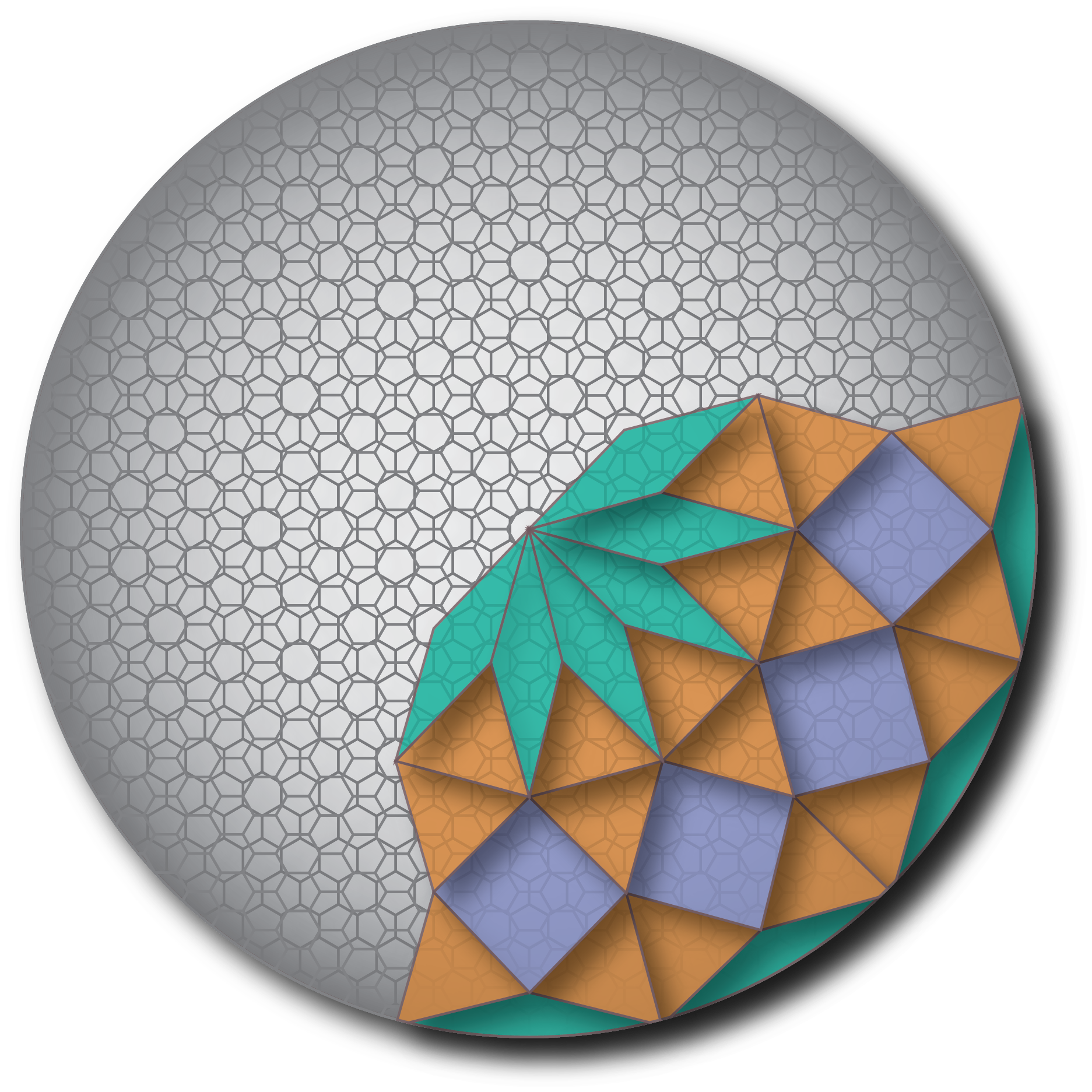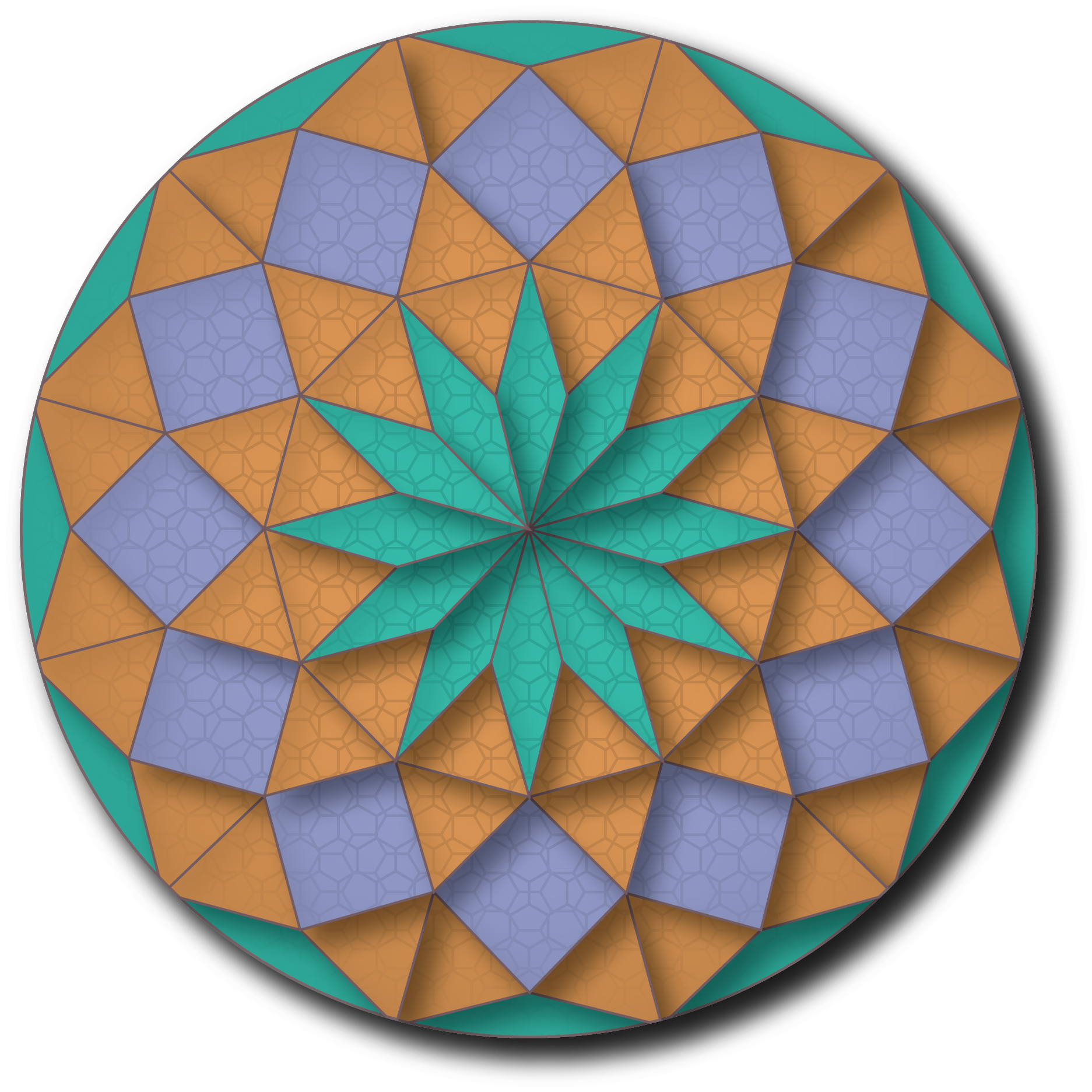Quasicrystalline Art

Quasicrystals, a beautiful manifestation of something without a strict crystalline symmetry but nonetheless shows order, have won a Nobel prize and have recently interested my own work with a dodecagonal graphene quasicrystal making its way into Science1.
This led to this beautiful cover in Science2

This phenomena is a perfect example of the kind of research I’ve been doing a lot with these days, and so it inspired the new logo for this website

One can tell how this is done: You find the points where two hexagons are on top of each other, put down a point, and connect. There are three shapes: a rhombus, an equilateral triangle, and a square. This can be done along the entire sheet to create an amazing looking pattern. For completeness, we can fill in the rest of the pictured grid to obtain:

The pattern starts to look even more intriguing the further out in the tiling you go. There is much to learn about such physical systems and their quasiperiodic cousins.
Footnotes
-
We have been studying how quasiperiodicity interplays with materials that have Dirac nodes, including twisted bilayer graphene. While we have not studied graphene at 30-degrees like the work in Science, that is an extreme where all crystalline periodicity is lost. ↩
Enjoy Reading This Article?
Here are some more articles you might like to read next: